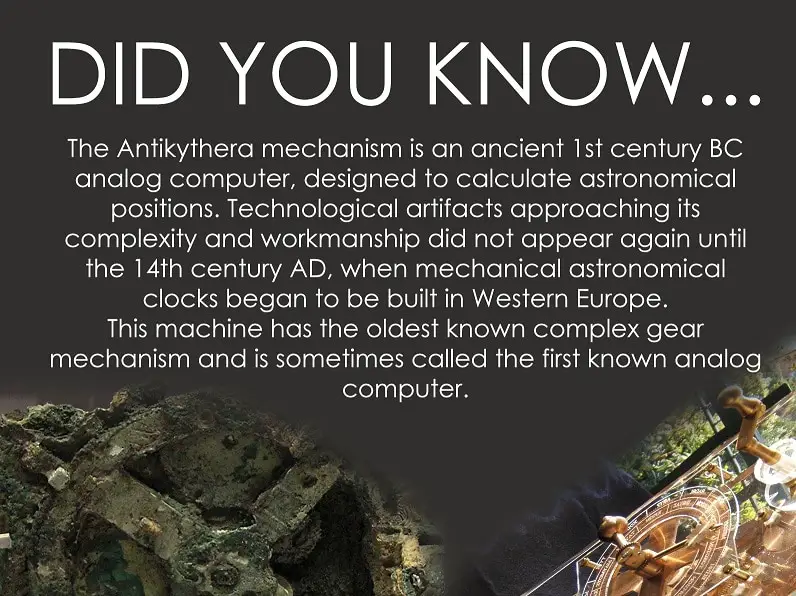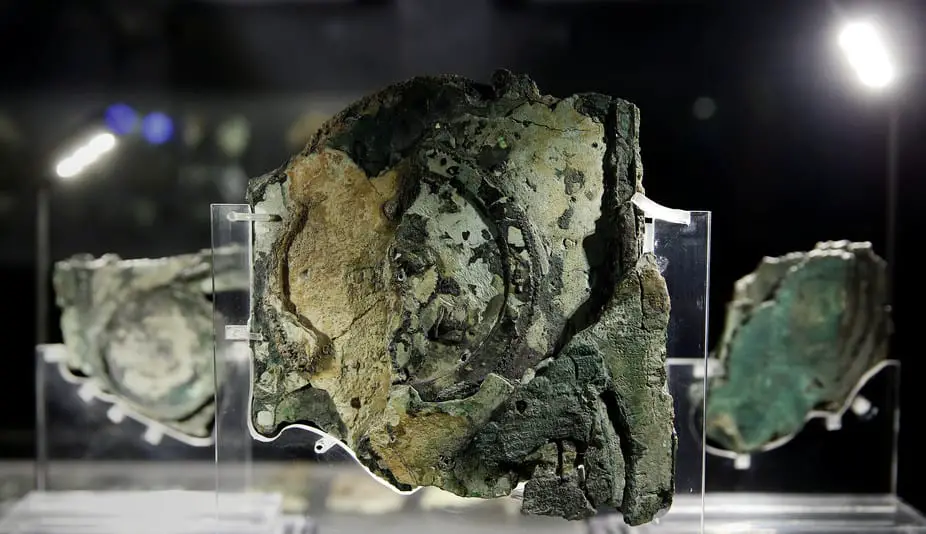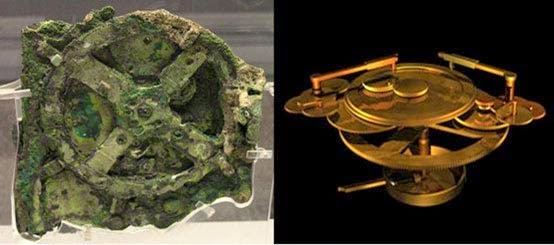The Antikythera mechanism is considered the FIRST analog computer in history. Researchers have still no idea who built it, what it was exactly used for, when it was built and where.
Discovered in 1900 among the remains of a shipwreck, and regarded as the first computer made by humans, the Antikythera mechanism remained a mystery for almost a century, until in 2006 British and American scientists began to figure out how the artifact, composed of about thirty gears worked. It is believed to have been created by the ancient Greeks sometime between 200 and the 100 BC. All known fragments of the Antikythera mechanism are kept at the National Archaeological Museum, in Athens.
Researchers are still studying the mechanism and believe there may still be several hidden functions in the mechanism itself.
In this article, we bring you 10 bewildering facts about the first computer created by man, thousands of years ago.

The mechanism was found by sponge fishermen near the Antikythera (or Anticythera) island among the remains of a shipwreck. Although the object is of Greek origin, it is believed to have been part of a treasure destined for Julius Caesar. The shipwreck occurred in the 1st century BC.
Fortune was not kind with the divers who discovered the artifact: one died, and two were paralyzed, victims of the so-called “raptures of the deep” (nitrogen poisoning) and decompression, little or totally unknown at the beginning of the twentieth century. The remains of the ship carrying the artifact were located at a depth of 47 meters.
Before the invention of digital computers, there were analog computers, ranging from calculation rules to devices to calculate the movement of tides. The Antikythera mechanism would be the first analog computer in history.
The origin of the Antikythera Mechanism is not known with certainty, although some experts believe it may have been created in one of the colonies of Corinth: Pergamon , where the second most important library of the antiquity was located, after the library of Alexandria. Rhodes, because it is believed that the ship came from that port, and where an important center of astronomy and mechanics was located; and Syracuse, where the school of Archimedes was located.
According to scholars, at least three important Romans are linked to this artifact. According to Professor Xenophon Moussas of the University of Athens, who stated in 2006 that the ship could have been carrying a booty of the sacking of Athens by General Sila, in 87 BC. Supposedly, the mechanism was destined for the triumphal parade of Julius Caesar. It has also been noted that around the same time, Marco Tulio Cicero spoke of a “sphere of Archimedes,” a planetary device that predicted the position of the planets, the sun, and the moon.

Curious composition. The Antikythera mechanism consists of 30 bronze gears of different size placed ingeniously inside a wooden stand, it is believed that their function was to predict positions of stars and planets, eclipses, and the exact dates of Greek festivities and games, such as The Olympics, the Pythian games, the Rhodes Games and the Isthmian games, among others.
The Antikythera Mechanism was so advanced that it was not outmatched by another mechanical device until 1500 years later, during the fourteenth century, when the first astronomical gears were built.
Experts believe that the device was extremely precise, and was able to predict the position of planets Mercury, Venus, Mars, Jupiter and Saturn to the point of only having one degree of error in 500 years.
While the exact origin of the device is a mystery, experts believe that there is increasing evidence that points to Rhodes, as the place of origin of the Antikythera Mechanism. The ship that carried the mechanism came from that island, which was also an important port; and the analysis of the inscriptions allowed some researchers to determine coordinates that coincide with the position of this island.
Further evidence that supports this idea is that by the time of the elaboration of the mechanism, Hipparchus –considered the father of trigonometry— was on Rhodes. There are also those who believe that Hipparchus could be the creator of the artifact. Scholars believe that the system used to predict the motions of the moon was based on the theory of Hipparchus.
